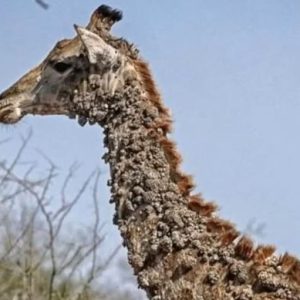A giraffe in South Africa’s Kruger National Park is drawing global attention after being seen with bark-like growths along its neck. From a distance, it eerily resembled part of a tree, blending almost perfectly into the dry landscape. These odd formations are caused by papillomavirus, a viral infection that creates thick, crusty skin lesions. Though startling in appearance, the condition isn’t life-threatening.
Experts say the virus can irritate the skin and lead to secondary infections, especially if the lesions are scratched or broken open. In giraffes, it often spreads through oxpeckers—small birds that feed on parasites but may unintentionally worsen wounds. This dual role of oxpeckers highlights the delicate balance in wildlife ecosystems. Even helpful creatures can sometimes cause harm.
